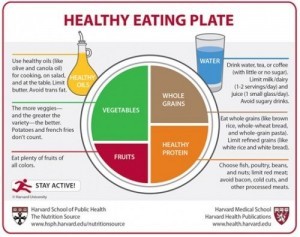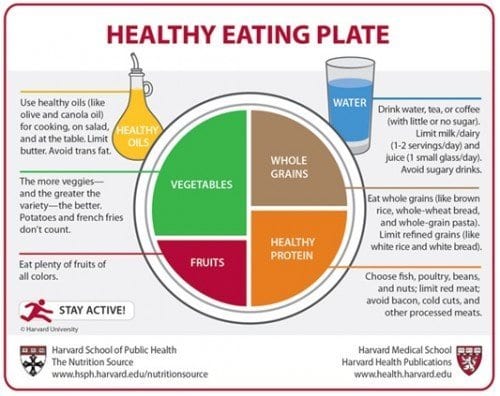 The U.S. Department of Agriculture has long held the food pyramid in high esteem as a recommendation for the types of foods we should be eating and their ratios to other foods. Within recent months, however, the USDA has redesigned its nutritional recommendations in the form of a plate, with portions of vegetables, grains, protein, fruit, and dairy represented as “slices of the pie.” The new dietary recommendations, detailed by the USDA at www.myplate.gov, was praised by some and criticized by others.
The U.S. Department of Agriculture has long held the food pyramid in high esteem as a recommendation for the types of foods we should be eating and their ratios to other foods. Within recent months, however, the USDA has redesigned its nutritional recommendations in the form of a plate, with portions of vegetables, grains, protein, fruit, and dairy represented as “slices of the pie.” The new dietary recommendations, detailed by the USDA at www.myplate.gov, was praised by some and criticized by others.
The Harvard School of Public Health and Harvard Health Publications are two of the groups that have leveled criticism against the new “plate” initiative. In response, they have created the “Healthy Eating Plate,” their own version of the USDA’s food plate.
According to Walter Willett, professor of epidemiology and nutrition as well as chair of Harvard School of Public Health’s department of nutrition, the USDA’s “My Plate” initiative is “simple,” but it might be “too simple.”
“It doesn’t have the details necessary to make healthy food choices,” said Willett. The lack of detail in the types of foods that we should aim for mean that you could follow the advice from My Plate and still eat a “horrible diet,” according to Willett. “It’s pretty useless.” In response to the perceived lack of detail in the USDA’s My Plate, Harvard’s Healthy Eating Plate is more specific about the types of food that are being recommended.
As with the USDA’s plate, half of Harvard’s plate is made up of fruits and vegetables, with slightly more vegetables than fruit. However, the Harvard plate specifically notes that potatoes don’t count as vegetables in this situation — Harvard researchers recently conducted a study that associated potato consumption with increased weight gain over a long period of time.

The “grain” section is more clearly defined to mean “whole grains” such as brown rice, whole wheat bread and whole grain pasta instead of refined and processed grains such as white rice and bread. The “protein” area of the plate is also more specifically defined as “healthy proteins,” including poultry, beans, fish, and nuts, which limits consumption of red meat and recommends cutting out processed meats, bacon, and cold cuts entirely.
A glass of milk has long been held as a healthy drink, but the Harvard Healthy Eating Plate eliminates the serving of dairy that the USDA’s plate recommends, instead encouraging people to drink a glass of water, tea, or lightly-sugared coffee. According to Willett, the Healthy Eating Plate only has room for one or two servings of dairy per day.
The Harvard diet includes a bottle of oil to the side of the plate to represent the healthy unsaturated fats found in foods like olive oil. According to the Harvard plate, we should limit butter while trans fats should be eliminated completely. According to Willett, the USDA plate does not provide enough detail about “the type of fat that should be used when we put something on our bread, on our vegetables [or] when we bake or cook,” says Willett.
The Myplate.gov initiative seeks to simply the sometimes complicated process of choosing a healthy diet. Among the no-nonsense recommendations are eating less and avoiding oversized portions, eating at least half of your grains as whole grains, and drinking water instead of sugary drinks.